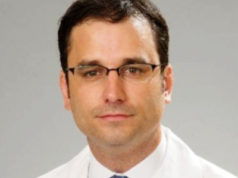
Imaging technologies in the aortic space will be a key feature of Saturday’s Plenary Session 8 (11:15 a.m. to 12:30 p.m.) in Potomac A/B, with speakers set to share data on Philips’ Fiber Optic RealShape (FORS) technology and Centerline Biomedical’s IntraOperative Positioning System (IOPS).
Valeria Mejia-Martinez, BS, a medical student at the University of Texas Southwestern Medical Center in Dallas, is due to deliver a presentation on target vessel catheterization with FORS using upper extremity versus transfemoral access for fenestrated/branched endovascular aneurysm repair (F/BEVAR).
Mejia-Martinez et al note in their study abstract that traditionally, and due to length constraints, FORS has been used primarily for transfemoral (TF) access, with the purpose of the present study being to report the feasibility and benefits of using FORS during F/BEVAR—including cannulation times of target vessels and radiation measures—comparing upper extremity (UE) versus TF access.
In order to achieve their study objective, the research team conducted a single-center retrospective study with prospectively collected data. They included data from 74 patients who underwent F/BEVAR with FORS guidance for target vessel catheterization during an 11-month period. Among 370 navigation tasks reported, the researchers note that 350 (94.6%) were performed with FORS.
The presenter is due to share at VAM the result that technical success was 90.3% and that mean time required to deem the catheterization as a failure was 8.4±5 minutes. She will also communicate that UE access, steerable sheath, and FORS catheters were used in 54.3%, 17.7% and 13.7% of cases, respectively.
Mejia-Martinez will conclude that F/BEVAR with FORS technology is feasible using both UE and TF access and facilitates artery catheterization with acceptable technical success and potentially reduced radiation. However, she will stress that further experience is required to “optimize the use of FORS during F/BEVAR”.
Speaking to VS@VAM ahead of the presentation, senior author Carlos H. Timaran, MD, MS, professor in the division of vascular and endovascular surgery at the University of Texas Southwestern Medical Center, shares his opinion on what is next for FORS: “Cost, potential use with all imaging platforms and expanded availability of guidewires and catheters are the key steps forward in the development and widespread application of this technology.”
Later in the session, Nicholas G. Hoell, MD, integrated vascular resident at the Cleveland Clinic in Cleveland, will speak on the use of electromagnetic IOPS as a 3D imaging adjunct in EVAR based on the results of a safety and feasibility study.
On behalf of senior author Francis J. Caputo, MD, associate professor and program director at the Cleveland Clinic, Hoell will share the results of a study that aimed to demonstrate the safety and efficacy of the electromagnetic-based IOPS in providing guidance for accurate wire and catheter navigation as an adjunct to fluoroscopy during thoracic endovascular aortic repair (TEVAR), FEVAR and EVAR.
Hoell will detail that 30 patients with aortic aneurysms suitable for TEVAR, FEVAR and EVAR were enrolled across two sites in the U.S. from 2020 to 2022.
He is set to reveal that technical success was achieved in 100% of patients with IOPS providing adjunctive 3D guidance for wire and catheter manipulation during aortic navigation and branch vessel cannulation, with zero serious and non-serious adverse events attributable to the IOPS system at seven-day follow-up.
Hoell will conclude at VAM that the electromagnetic-based IOPS is safe and effective in providing adjunctive 3D guidance for wire and catheter manipulation in infrarenal and fenestrated endovascular abdominal aortic aneurysm repair. She will, however, underline the fact that future research is needed to investigate the potential for IOPS to reduce radiation exposure to patient and operator, reduce contrast usage, and reduce operative time while providing better visualization of complex anatomy.
Caputo told VS@VAM ahead of the presentation: “It is imperative that we find alternative imaging modalities to fluoroscopy. This study is a first step in showing the IOPS is safe and effective as an adjunct to traditional fluoroscopy. Future studies must demonstrate the ability to perform endovascular procedures alone with IOPS as well as the ability to have the tools to navigate tough anatomy.”












